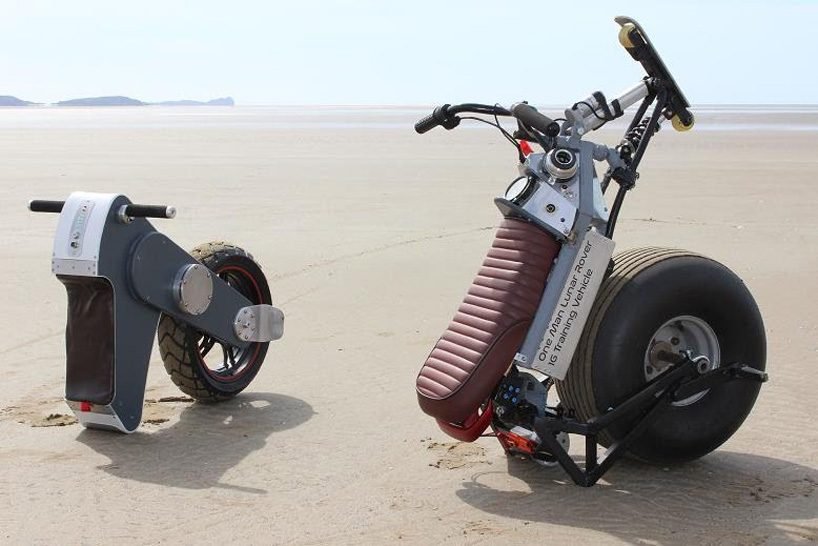
A mini jacklift can be used to lift heavy objects quickly and easily from vehicles. It's a very useful tool that will help you work with your vehicle on any level. You can choose from either a stationary or mobile mini jack. Both have their advantages and disadvantages. Both are designed to lift heavy loads. The other can be used for lighter loads. The latter can be used to repair and maintain small cars, like motorcycles.
Stainless steel scissor lift table
Mini jacklift stainless-steel scisser lifttable is built to accommodate all types of maintenance. This type lift table conforms with the ASME/ANSI safety standards. To prevent foot injuries, it has a swivel wheels with a protective frame. It also fulfills overload protection requirements.
Electric Hydraulic Scissorlift tables maximize safety while saving space. They can be used in any type of manufacturing environment and are available in a range of configurations. Galvanized legs made of steel are resistant to rust and corrosion. It has a Hand Control and an External Power Unit for maximum versatility. These lift tables are a great solution for home or business applications. Mini jacklift stainless steel scissorlift table can be ordered online from a reliable supplier.

Titan 1,000 lb. motorbike mini jack
The Titan Motorcycle Mini Jack might be what you are looking to buy if your search for a motorbike lifting device is over. This jack is perfect for repairs to bikes and ATVs, as it can lift 1,000 lbs. For maximum safety and comfort, it comes with rubber coated body pads and adjustable saddle adapters. Titan Lifts is based in Greenwood, Indiana. You can learn more about their motorcycle lifts at titanlifts.com.
Titan Lifts are proud to manufacture motorcycle and car lifts. The company's motto is "Nothing stronger". Titan Lifts, a long-standing company, understands the needs both of car and bike enthusiasts. Titan Lifts prides itself on producing the highest quality lifts. Make sure you read our Titan Lifts reviews before you purchase.
Powerflex BMW & Mini jack pad adapter
Powerflex BMW & Mini Jack Pad is designed to fit the MINI and BMW plastic lifting points. This adapter allows for more height and stability while preventing contact between the rocker panel and the jack. This pad is compatible with floor-jacks. Powerflex offers you a lifetime guarantee. Check out their website for more information. The BMW & Mini jack pad adapter is easy to install.
Powerflex has developed the Mini jack adapter for BMW & Mini. The advanced polyurethane provides exceptional performance, long life, and quality. The adapter won't increase vibration or noise when you work on your vehicle. If you have an adapter for a manual, it will fit your Mini and BMW. There are two types of street bushings: racing and street. Powerflex Street bushings may be yellow or purple depending on whether they are needed for daily driving or track use.

Titan 1,500 lb. car mini jack
The Titan Multi-Purpose 1,500 lb. Car mini jack lifts are strong, multi-purpose lifts that can be adjusted from two 7/8" to sixteen 1/2". The lift features locking steel swivel wheels and drop-in height adapters. There is also a 4-position locking height adjustment. The lift is lowered to a height of two 7/8 inches at its lowest setting.
The Titan Lift has a heavy duty hydraulic pump and rubber-padded raising arms. It is made to lift heavier cars. It can hold a 1,500-pound car. To avoid any damage, make sure the car is placed on a solid concrete floor. Three drip pans are included with the Titan Lift. They fit perfectly between the lift's tracks.
FAQ
What is the difference?
They are both similar, but not identical. A mechanic repairs cars and an automotive technician performs maintenance.
A mechanic must have good manual dexterity and be able to perform simple tasks quickly. A mechanic should also be able accurately diagnose and repair problems.
An automotive technician needs to be more technically skilled than a mechanic. They must be able to read blueprints and use tools such as drills and wrenches.
They should also be capable of safely performing complex procedures. They must also be familiar with different types of engines and electrical systems.
They must also be able comprehend how the various parts interrelate with one another.
The result is that a mechanic often earns less than an auto technician. However, both careers offer great opportunities.
How do I prepare for a mechanic apprenticeship?
Understanding what you're getting into is crucial. You must understand the workings of cars. You will be able to know exactly where to begin when you arrive at the garage for your first day.
It is also important to be able to fix small problems like broken lights or tires.
This will teach you how to diagnose problems and fix them yourself.
For the purpose of putting them back together again, you'll need to be able to identify how each piece fits together.
Finally, you need to be able to safely and efficiently use tools.
These things will enable you to be a competent mechanic.
What type of job is there for a car mechanic?
There are three main areas of employment for car mechanics:
-
Automotive repair shops
-
Dealerships
-
Independent garages
Automotive repair shops
It's where most people start to think about becoming a mechanic. This is the best way to get started. You can either work in a shop run by someone else, or start your business.
If you choose to work at a store, you need to join a union. After being accepted into the union, the union will provide training.
After the training, you will be ready to go and start your job.
Registering with the government is required if you intend to open a garage. After registering, you'll be required to meet certain standards.
Once you register, you'll receive a license that allows you to operate your garage.
Your license allows you to sell spare parts and make minor repairs. You can't fix major engine problems with your license.
In addition to selling spare parts, you'll also be expected to offer advice and guidance to customers.
Dealership jobs
Most dealerships employ mechanics who can specialize in a particular area of the car. They might be able to only fix brakes or replace tires.
However, some dealerships also hire general mechanics who can handle all aspects of car repairs.
These positions often require applicants to undergo specific training before being allowed to work. Employers can then choose the best candidates for their job.
Some dealerships will hire graduates straight from college. These graduates already know the basics of mechanical engineering and therefore have no problem learning about cars.
Independent garages
Independent garages do not belong to any dealership. They tend to be focused on high-quality service.
Independent garages can pay higher wages because they aren't associated with any company. As a result, these jobs are generally better paid than those at dealerships.
Independent garages don't necessarily make for better work environments. Many owners prefer to control their businesses themselves, rather than delegating it to employees.
You may find yourself working for long hours and not having control over the day.
Additionally, you should expect to earn lower wages if employed by a dealership.
It's possible to switch between jobs. To work at a dealership you will need to contact your employer to see if he is open to the idea of hiring you.
You could also apply directly to an owner of a garage if that's what you want.
Unfortunately, finding a new job can be difficult. There are plenty of other factors that influence how much you earn.
For example, the type of vehicle you repair and whether you charge extra for labor.
Statistics
- The U.S. Bureau of Labor Statistics (BLS) reports that the job outlook for automotive service technicians and mechanics is expected to decline by 4% from 2019 to 2029. (indeed.com)
- There were 749,900 jobs available for automotive service technicians and mechanics in 2016, which is expected to grow by six percent through 2026. (jobhero.com)
- Apprentice mechanics earn significantly less hourly than mechanics who have completed training, with a median wage of approximately $14.50 an hour, according to PayScale. (jobhero.com)
External Links
How To
How to become an automotive technician
An automotive technician performs repairs and maintains vehicles. He/she is employed at automobile dealerships, garages, service centres, and auto shops. Customers can rely on him/her to fix their cars, trucks and motorcycles. An automotive technician must have the ability to quickly diagnose and fix problems.
An associate degree from a vocational school is required for anyone who wishes to become an automotive technician. After completing this program, he/she will need to pass the National Institute for Automotive Service Excellence's (ASE) certification exam. ASE stands to American Society of Mechanical Engineers. The ASE certification test consists two sections. The first section tests for mechanical knowledge, the second for practical skills. To pass the test you must go to one of the authorized testing facilities. You can find these locations online or through your local automobile dealer.
After passing the test, a candidate must pass an examination in order to be licensed as an automotive technician. The process will vary depending on where an applicant lives. Some states require that applicants attend a training class, while others allow them freedom to study at their own pace. In addition, some states license technicians immediately after they receive their license, while others wait until they have completed at least six months of employment as an automotive technician.
A person must apply to an auto dealership in order to get started as an automobile technician. New employees are usually apprentices when they first get hired. Apprenticeship programs usually last three years. This is when a student can learn how to do basic repairs such as changing oil, adjusting brakes and replacing tires. Advanced repairs can be done by some students, including replacing shocks, installing air filters and repairing engines. Many schools offer classes during normal business hours. Some schools also offer evening classes, if necessary.
After completing an apprenticeship, a student becomes a journeyman. Journeymen typically spend four to five years learning how to install major systems, such as transmissions, differentials, steering gear, suspensions, and drive shafts. They also learn to perform complex repairs, such as remanufacturing engines, rebuilding transmissions, and troubleshooting electrical components. Many employers prefer hiring journeymen because they know the job well and understand what the customer expects.
Candidates who pass the required exams are eligible for a license. According to the Bureau of Labor Statistics in 2010, nearly 1.7 Million automotive mechanic jobs were available. This figure is expected to rise 18 percent between 2009-2020. If a candidate decides to open his/her own shop, he/she should prepare to invest many thousands of dollars in equipment and supplies.
The salary of an automotive technician will depend on many factors including where you live, your education level, experience and the type of employer. A jobless person could make an average of $20,000 annually. Someone with only a high school diploma could earn around $21,000 per year. Earnings for those with an associate's diploma are approximately $24,000/year. Technicians with a bachelor’s degree made about $27,000 annually. The average annual salary for those with master's degrees was $32,000. Salary increases are common, so a professional who earns less than $30,000 now could reasonably expect to earn $40,000 or more in just a few years.